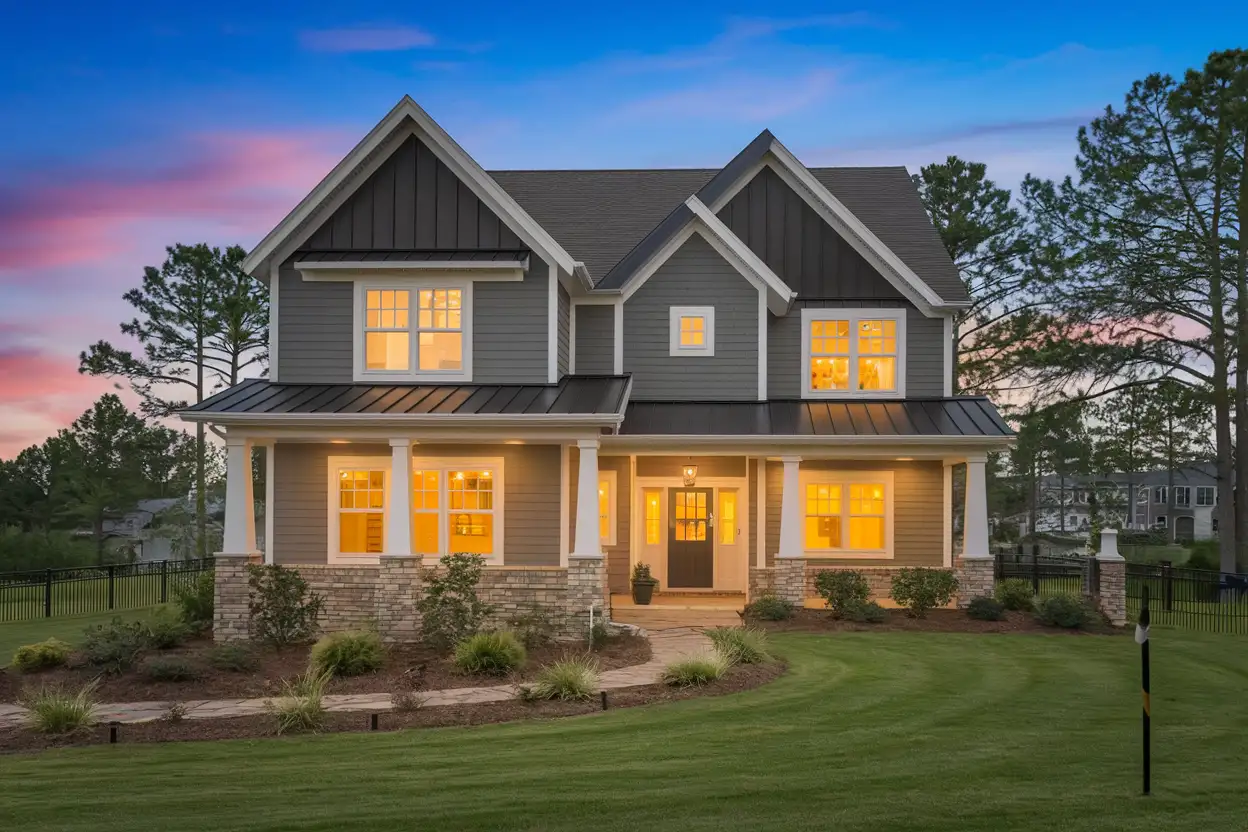1800-120-5153 contact@tricolour.co.in

I. Introduction
Are you building your dream home, or contributing to a climate crisis? The real estate industry is one of the largest contributors to global carbon emissions, responsible for nearly 40% of energy-related CO2 emissions worldwide. As homeowners, we often focus on aesthetics and comfort, but what about the environmental impact of our choices?
The construction and maintenance of traditional homes leave a massive carbon footprint, affecting the planet and future generations. Sustainable home choices are no longer a luxury but a necessity. In this blog, we’ll explore the hidden environmental costs of home construction and provide sustainable alternatives to make your dream home eco-friendly and future-proof.
II. Construction Materials and Practices: Hidden Costs
A. Traditional Materials and Their Impact
Concrete and steel – These materials emit high carbon emissions. The cement industry alone contributes to 8% of global CO2 emissions.
Deforestation for lumber – Logging for timber results in carbon-absorbing forests destruction.
Chemical-based paints and finishes – Volatile Organic Compounds (VOCs) from paints and finishes contribute to air pollution and health hazards.
B. Energy Inefficiency in Standard Construction
Poor insulation leads to excessive energy consumption for heating and cooling.
Inefficient HVAC systems waste energy and increase electricity bills.
C. Waste generation.
-
Construction generates enormous amounts of waste, with landfills piling up non-recyclable debris.
III. Plot/Location: More Than Just a View
Choosing the right location for your home is crucial not just for aesthetics but also for sustainability.
A. The Impact of Location on the Environment
Urban sprawl leads to deforestation, habitat destruction, and agricultural land loss.
Coastal areas face risks of erosion and rising sea levels due to cpmate change.
Water scarcity in certain regions makes large-scale development unsustainable.
B. Climate and Ecosystem Considerations
Homes should complement local climates rather than work against them. Thoughtful placement and orientation can reduce energy consumption.
C. Zoning and Regulations
Understanding environmental regulations helps make informed decisions about sustainable construction and minimize legal risks.
D. Natural disaster risks.
Building in disaster-prone areas can be costly and harmful to the environment. Choose resilient designs and safer locations is key.
IV. Sustainable Solutions: Building a Better Future
Making the right choices in home building can drastically reduce environmental impact. Here’s how:
A. Eco-Friendly Construction Materials
Bamboo – A fast-growing and sustainable alternative to traditional wood.
Recycled steel – Reduces mining-related damage while maintaining durability.
Low-VOC paints and finishes – Improve indoor air quality while being environmentally friendly.
Insulated Concrete Forms (ICFs) – Provide superior energy efficiency.
B. Energy-Efficient Home Design
Solar panels – Reduce fossil fuel dependence.
Passive solar design – Uses natural heat and cooling to reduce energy needs.
High-efficiency windows and insulation – Minimize heat loss and conserve energy.
C. Water Conservation
Rainwater harvesting – Reduces dependence on municipal water supply.
Greywater recycling – Reuses water for irrigation and other non-potable uses.
Drought-resistant landscaping – Requires less water, reducing overall consumption.
D. Green Building Certifications
Homes with certifications like LEED (Leadership in Energy and Environmental Design) ensure high standards of sustainability, efficiency, and durability.
E. Permaculture and Sustainable Landscaping
Integrating native plants and eco-friendly landscaping can significantly cut down water usage and promote biodiversity.
V. The Long-Term Benefits of Sustainable Homes
Opting for sustainable home solutions comes with lasting advantages:
Lower energy bills – Energy-efficient designs reduce electricity and water costs.
Higher property value – Sustainable homes are in high demand, making them better long-term investments.
Improved indoor air quality – Non-toxic materials and proper ventilation enhance health and well-being.
Positive environmental impact – Reduces carbon footprint and conserves resources.
Climate resilience – Homes built with sustainability in mind can withstand extreme weather conditions.
VI. Tricolour Properties: Your Partner in Sustainable Living
At Tricolour Properties, we believe that dream homes should be built responsibly. Our commitment to sustainability ensures that your investment secures a beautiful home but also contributes to a healthier planet.
Our Focus Areas:
Eco-conscious location selection – Minimal environmental impact.
Sustainable construction practices – Using energy-efficient materials and designs.
Energy-efficient homes – Incorporating renewable energy and smart development.
Pan-India availability – Sustainable homes across various cities to suit diverse needs.
Climate resilience – Homes built with sustainability in mind can withstand extreme weather conditions.
Making sustainable choices is crucial in today’s world. Whether you're planning to build a home or invest in a property, choosing an eco-friendly approach can make all the difference. Explore our eco-friendly housing projects and get expert guidance on sustainable real estate.
Book a free consultation to learn how you can make your dream home eco-friendly.
